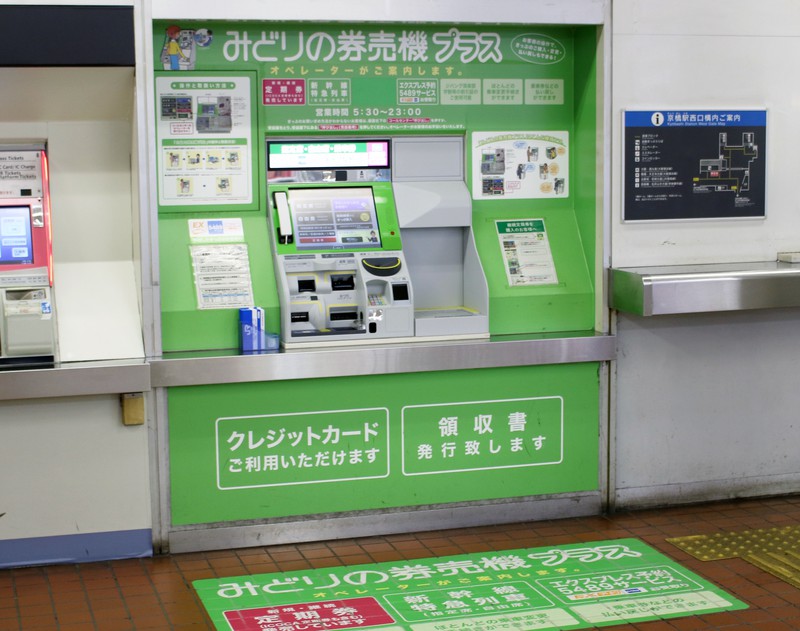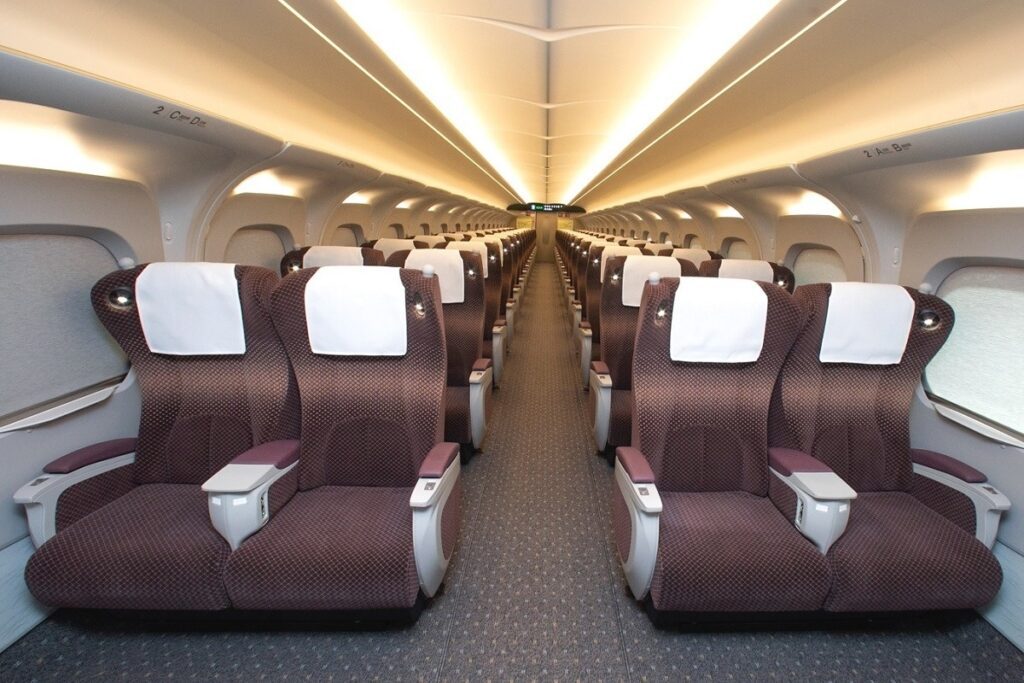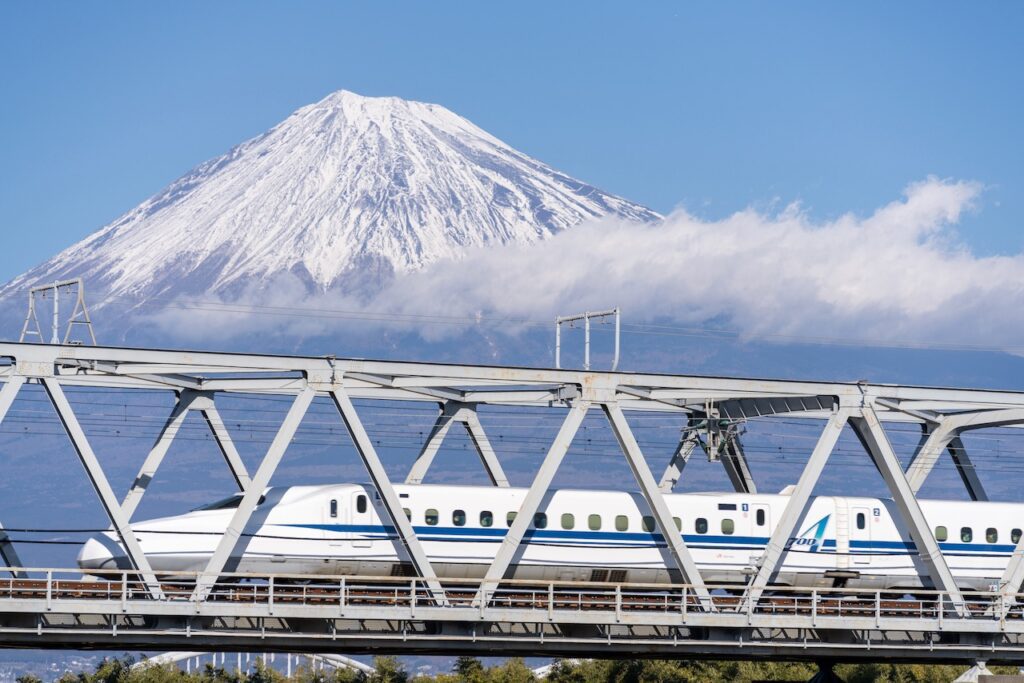Most visitors to Japan probably arrive in Tokyo and mind blown by its buzz and beauty. But soon they ask themselves, “Is visiting Kyoto from Tokyo worthwhile?” The answer is overwhelmingly yes. With many beautiful temples, Zen gardens, and traditional Japanese inns called Ryokan, visiting Kyoto should definitely be on your list. Fortunately, visiting Kyoto from Tokyo is very straightforward and the journey itself is an experience you should not miss. In this post, I’ll go through how to take a world famous bullet train called Shinkansen from Tokyo to Kyoto. (Note, all prices and train schedules are as of January, 2024). Please double check with the official Japan Rail website.
| This site may contain affiliate links. If you make a purchase through these links, I may earn a small commission at no extra cost to you. Thank for your supporting Casper’s Journey! |
What Bullet Train Should I take to travel from Tokyo to Kyoto?
The Shinkansen is the fastest and most popular way to travel between Tokyo and Kyoto. 🚅 (yes, there is even a shinkansen emoji!) There are three types of bullet trains you can take – Nozomi, Hikari, and Kodama. Tokyo Station in the Marunouchi district or Shinagawa Station is the station you need to take a Shinkansen. You will arrive at Kyoto Station. Both are major transport hubs connecting to other parts of Japan.
Nozomi Shinkansen (のぞみ新幹線)
This is the fastest way to travel from Tokyo to Kyoto with least stops. The travel time is about 2 hours and 10 minutes. Nozomi Shinkansen depart about every 10 minutes. The earliest train leaves at 6:00 AM and the last train leaves at 09:24 PM. (*as of January 2024)
Hikari Shinkansen (ひかり新幹線)
This is the second fastest way to get to Kyoto from Tokyo with a few more stops. The travel time is about 2 hours and 40 minutes. Hikari Shinkansen depart about every 30 minutes. The earliest train leaves at 6:21 AM and the last train leaves at 08:12 PM.
Kodama Shinkansen (こだま新幹線)
This is the slowest way to travel from Tokyo to Kyoto with more stops. The travel time is about 3 hours and 40 minutes. Kodama Shinkansen depart about every hour. The earliest train leaves at 6:57 AM and the last train leaves at 07:57 PM.
Can I use Japan Rail Pass for Shinkansen?
You can use the Japan Rail Pass for all Shinkansens except for the Nozomi trains. So, unless you’re in a very tight schedule, Hikari trains should be your first choice. If you want to take a Nozomi train with your Japan Rail Pass, you can purchase a special ticket which allows you to board a Nozomi train. This ticket is awkwardly called “[Only with Japan Rail Pass] Nozomi Mizuho Ticket“. It costs 4,960 Japanese Yen (JPY) for adult and 2,480 JPY for child. You need to buy this ticket per journey. Would you save 30 minutes by paying 4,960 JPY? I personally would buy a Bento box (lunch box) which is available on platforms and enjoy the extra 30 minutes. 🍱
How to travel from Tokyo to Kyoto by Bullet Train
| Journey Time | Frequency | Earliest / Latest dept time | Japan Rail Pass | |
|---|---|---|---|---|
| Nozomi | 2h 10m | every 10m | 6:00 AM / 09:24 PM | additional ticket required |
| Hikari | 2h 40m | every 30m | 6:21 AM / 08:12 PM | Yes |
| Kodama | 3h 40m | every 1h | 6:57 AM / 07:57 PM | Yes |
How much does a bullet train ticket cost from Tokyo to Kyoto?
Japan Rail Pass is a great value, but if you’re planning to take only one-way to Kyoto and no other trains, it may make sense to buy a bullet train ticket without the pass. You’ll need to buy two types of ticket to board a shinkansen – “Basic fare ticket” and “Super Express Ticket“. Additionally if you want to reserve a seat or ride a first-class (called Geen-cars), you’ll need pay additional fees.
How much does it cost to travel from Tokyo to Kyoto by Bullet Train
| Total Ticket Price (basic fare + express ticket (non-reserved seat)) | with reserved seat (+400 JPY; high-peak, +200 JPY; peak, -200 JPY; low)* | First -class (Green Cars) | Japan Rail Pass | |
|---|---|---|---|---|
| Nozomi | 13,320 JPY (6,660 JPY for Child**) | 14,170 JPY (7,080 JPY for Child) | 19,040 JPY (same for Child) | additional 4,960 JPY (2,480 JPY for Child) |
| Hikari | 13,320 JPY (6,660 JPY for Child) | 13,850 JPY (6,925 JPY for Child) | 18,720 JPY (same for Child) | ✔️ |
| Kodama | 13,320 JPY (6,660 JPY for Child) | 13,850 JPY (6,925 JPY for Child) | 18,720 JPY (Same for Child) | ✔️ |

If you have a Japan Rail Pass, you’ll be able to reserve a seat at no extra cost. If you’re traveling during holiday season, I’d recommend you reserved a seat. You can do so online up to a month in advance, or with a reserved seat ticket machine, or at a ticket office. Make sure to pick up a reserved seat ticket from a ticket office before boarding if reserving it online. Ticket machines have English and other language options and take credit card.
Is first class (Green Car) bullet train worth it?

Shinkansen trains are very clean and comfortable. The newer trains (N700S) have a power outlet for each seat, while the older model (N700A) only has an outlet only at the window side (A or E seats). All coaches are non-smoking cars, but have a smoking-room. Free wifi is available.
The seating configuration for unreserved cars is 2×3, while the first class offers more spacious 2×2 (photo on the right). As more Japanese business people use the first class, it tends to be quieter and seat colors are more calming. One advantage for first class is that each seat always has a power outlet if you need to charge your phone or laptop. Additional benefit is that you’ll be offered a hand towel (oshibori) and can request a blanket if necessary. I’d rather save about 5,000 JPY and happily enjoy the ride in a regular class. But it may be an option if you want to work or take a nap. 💤
Which side of bullet train should I sit to see Mt. Fuji?

Facing the direction of travel (Kyoto), you will see Mt. Fuji on your right. Make sure to get a window seat (seat D if you’re in a Green Car, seat E if you’re in a regular car). About 40 minutes after departing Tokyo, you will pass Mishima Station. Get your camera ready and you’ll see (depending on the weather) the beauty, the pride of Japan. It is spectacular and often oohs and aahs are heard. The train conductor also often makes an announcement. (Don’t rely on the announcement though as it may not alway be the case)
Finally, once in Kyoto
Kyoto Station is big, though not as big as Tokyo. You can easily spend some time exploring and browsing souvenirs at the station before going on an adventure.
Kyoto, the former capital, is a city steeped in history and tradition. Known for its well-preserved temples, shrines, and traditional wooden machiya houses, it exudes a serene and timeless ambiance. The city is a cultural treasure trove, offering a glimpse into Japan’s rich heritage with its beautiful gardens, tea ceremonies, and historic landmarks. You will enjoy the striking contrast of two cities. You can also take a day trip to Nara famous for Great Buddha (Daibutsu).
On the way back to Tokyo, the the journey time and types of trains are the same. You’ll see all seats are turned to face the direction of Tokyo. So if you want to see the Mt Fuji, you sit on left side of the train. Do let me know if you have any question, love to hear your experience.
